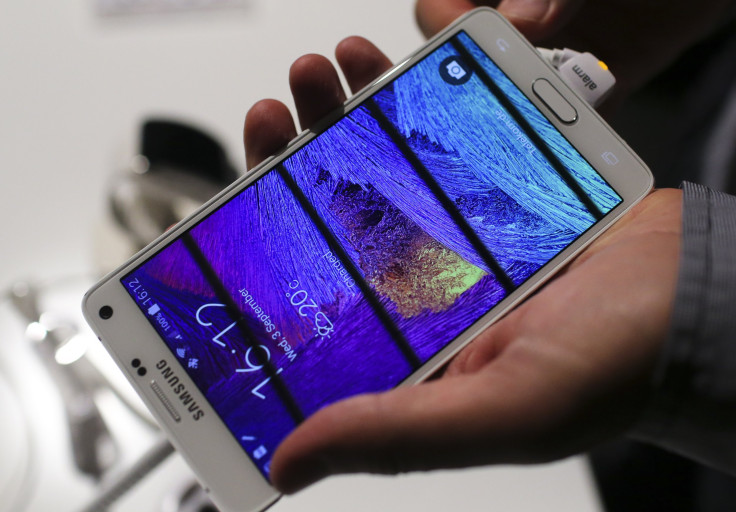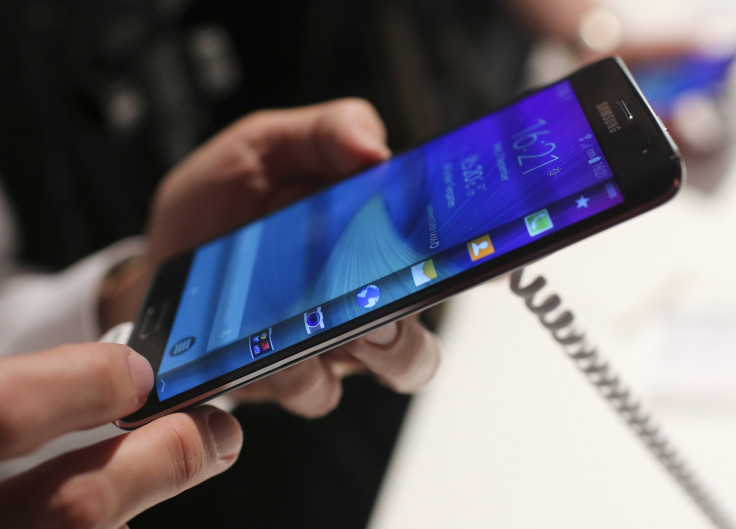Samsung Galaxy Note 4 Is Here, Apple's ‘iPhone 6L’ Is Coming; Phablets To Surpass Tablets By 2015

Bigger will be better, at least for smartphone users, according to a new report. Phablet shipments are expected to surpass those of portable PCs and tablets by 2015 as consumer interest shifts toward handsets with bigger displays, according to International Data Corporation, or IDC.
Global shipments of phablets -- smartphones with screen sizes ranging between 5.5 inches to under 7 inches -- are predicted to reach 175 million units in 2014 compared to only 170 million portable PC unit shipments in the same period. By 2015, total shipments of phablets will top 318 million units, exceeding the 233 million tablets originally forecast, IDC said. The latest projections coincide with the unveiling of Samsung Electronics Co Ltd’s (KRX:005930) Galaxy Note 4 on Wednesday, even as Apple Inc. (NASDAQ:AAPL) is expected to unveil a larger iPhone, dubbed the “iPhone 6L,” next week.
“With Apple expected to join the space in the coming weeks, we anticipate even more attention on phablets as larger screen smartphones become the new norm,” Melissa Chau, a senior research manager at IDC, said in a statement.
IDC expects phablets to grow from accounting for 14 percent of the worldwide smartphone market in 2014 to 32.2 percent in 2018, while the percentage of the market made up of phablets and regular smartphones is expected to account for 75.6 percent of the overall “Smart Connected Device market.”

Falling prices for phablets and smartphones are also likely to help drive this trend. In 2013, the average selling price, or ASP, of a phablet stood at $568 compared to a regular smartphone's ASP of $320. In 2014, those prices are expected to drop to $397 and $291, respectively, according to IDC.
“A Future Fueled by Phablets”
On Wednesday, Samsung announced the expansion of its flagship Galaxy Note series with the new Galaxy Note 4 and Galaxy Note Edge handsets.
The Galaxy Note 4 is loaded with an improved 5.7-inch Quad HD Super AMOLED display with a resolution of 2560×1440 pixels. The device also sports an advanced camera system, equipped with a 16 megapixel rear-facing camera and a 3.7 megapixel front-facing camera.
Samsung has claimed to take “the Galaxy Note experience to the next level” with the Galaxy Note Edge’s “unique curved Edge screen,” which allows users to easily access frequently used apps, alerts and device functionality -- even when the cover is closed -- by swiping with the thumb. Users can also receive notifications directly on the “Edge Screen” while watching videos.

Samsung, whose share of the smartphone market has reportedly quadrupled to 31 percent since 2010, is now expected to face some tough competition from Apple, which is widely expected to enter the so-called phablet segment this year with a 5.5-inch version of its upcoming iPhone 6.
Apple has increased the screen size of the iPhone by only half an inch since the launch of the first-generation version in 2007, even as the world's appetite for larger phones has grown. According to IDC, smart devices with screens bigger than 4.5 inches represented a third of the worldwide market in 2013, and that figure is projected to grow to 44 percent in 2014.
However, the launch of the “iPhone 6L” with a 5.5-inch screen is expected to help Apple compete better with Samsung, which has been the leader in this segment for many years.
“Samsung has had a few years with no real competition on larger form-factor phones, and that’s where they’ve been able to run the table on Apple,” Bloomberg quoted Gene Munster, an analyst at Piper Jaffray, as saying. “Now that competitive advantage is going to simply disappear.”
Meanwhile, a new survey conducted by Japanese market research firm MMD has revealed that a majority of consumers in the Asian country are willing to buy a larger iPhone. The iPhone has not managed to effectively penetrate the Japanese market for smartphones.
The survey, which was conducted among 3,000 mobile phone users from three major carriers NTT Docomo Inc (NYSE:DCM), SoftBank Corp (TYO:9984) and "au" by KDDI Corp (TYO:9433) in August, showed that 40 percent of potential buyers in Japan were interested in the 5.5-inch version of the iPhone 6, Apple Insider reported.
© Copyright IBTimes 2025. All rights reserved.






















